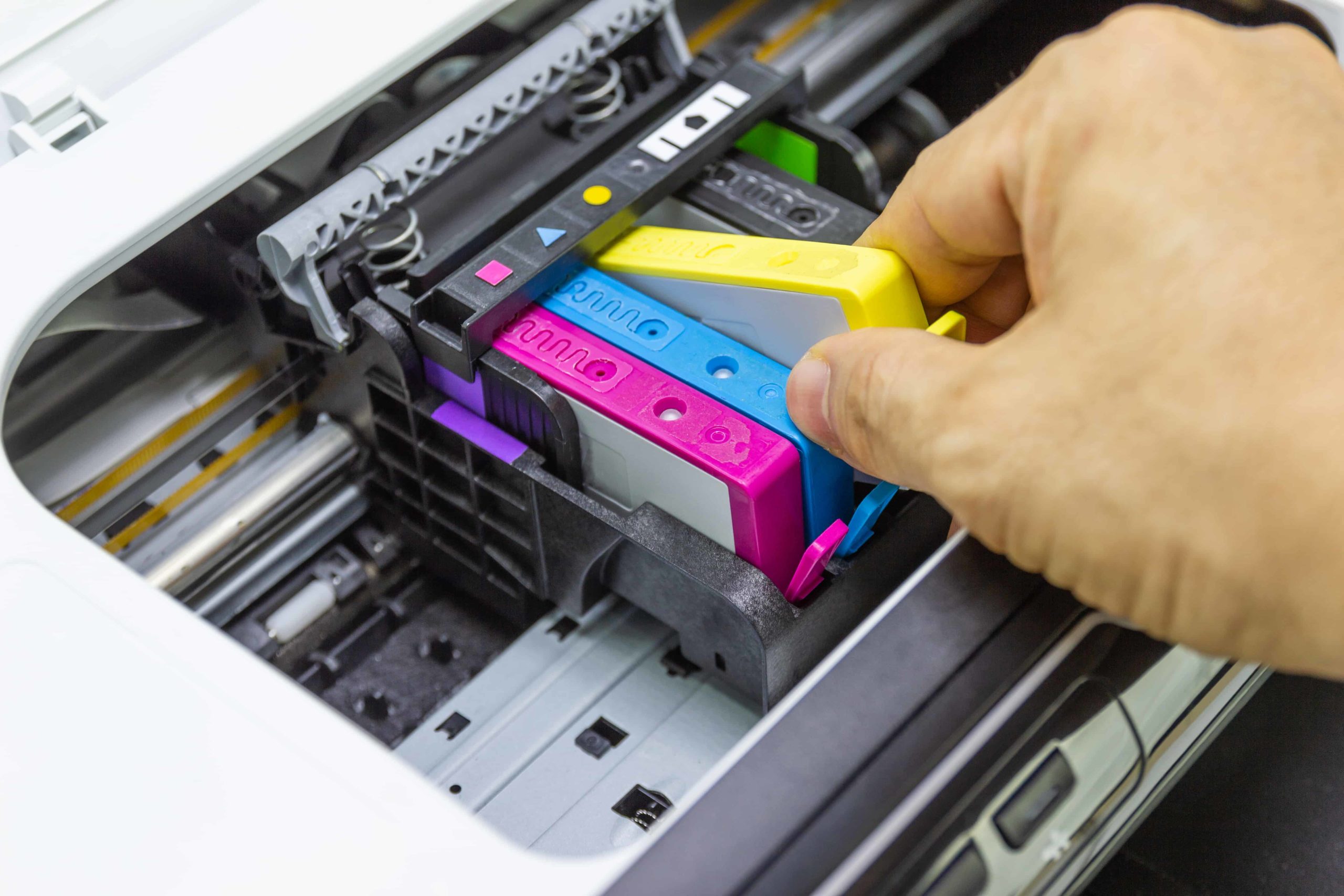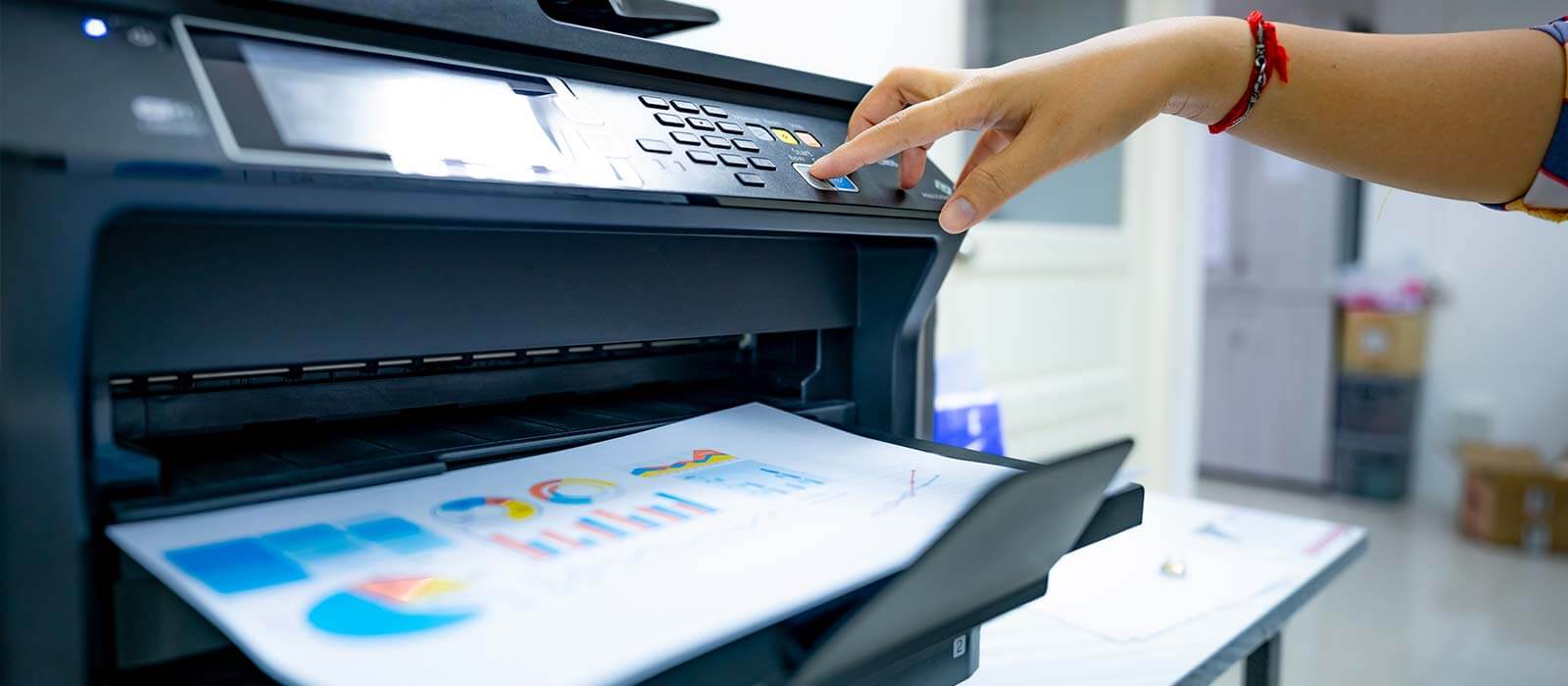
Printer ink is a fundamental component of the printing process, whether it’s for home or business use. This article explores various aspects of printer ink, including its composition, production methods, colour formation, cost factors, and how it differs from toner. By gaining a deeper understanding of printer ink, readers can make informed decisions about their printing needs and optimise their printing experience.
Let’s dive into the details to uncover the fascinating world of printer ink.
What is printer ink made of?
Ink is typically a liquid or paste that contains dyes or pigments. Pigments are the primary source of ink colouration and can be derived from a range of nitrogen-containing compounds. In the context of printers, ink is used to generate copies of digital images or text.
A vast majority of inks produced are for printing purposes and employ pigments rather than the dyes used in writing inks to create different colours. In fact, printing ink accounts for more than 90% of all inks produced.
How is printer ink made?
Ink comprises a variety of ingredients, such as varnish, resin, solvents, pigments, and additives, including waxes and lubricants. Carbon black pigments are commonly used to create black ink, while white pigments, such as titanium dioxide, can be used to lighten other ink colours.
Varnish, which serves as the base of any ink, is typically a clear liquid. Various varnishes are produced for different types of inks. To create a homogenous mixture, the resins, solvents, and additives are mixed together at high temperatures.
Resins play a critical role in binding the ink ingredients together. They react with one another, resulting in a more viscous varnish. Pigments are then blended into the varnish and ground to eliminate any clumps, allowing the colours to be evenly distributed throughout the ink.
How Are Different Ink Colours Formed?
Traditional printers rely on four primary ink colours: cyan, magenta, yellow, and black. By combining these colours in varying proportions, printers can produce a full spectrum of hues necessary for printing in full colour.
Modern printers may also incorporate additional inks, such as light cyan, light magenta, or grey, to enhance image quality and improve colour accuracy.
Why Is Printer Ink So Expensive?
The high cost of printer ink has been a subject of discussion for many years. However, it’s important not to be deceived into thinking that purchasing cheap cartridges will save you money.
Cutting-edge printer inks are the result of extensive research and advanced technology, which is a significant factor contributing to their relatively high price.
Investing in a printer and purchasing genuine manufacturer ink or toner cartridge replacements is the best approach to ensure the longevity and optimal performance of your machine. Although this may initially appear to be a more costly option, it will save you money in the long run. Learning how to maximise the life of your ink cartridges can also help you manage your ink expenses.
How Is Ink Different From Printer Toner?
Ink and toner are used in both home and business printing, but they are applied to paper surfaces in different ways.
Ink is a liquid that contains pigments and dyes and is typically used in inkjet printers. There are two types: dye-based ink (colourants dissolved into liquids) or pigment-based ink (fine powder suspended in liquid).
Inkjet printers utilise tiny nozzles to spray small droplets of ink onto paper, creating hard copies of digital images or documents. Traditional inkjet printers typically use a four-ink cartridge design containing cyan, magenta, yellow, and black inks, also known as CMYK.
Toner, on the other hand, is a very fine powder made from polyester, a type of plastic. Laser printers generate an electrostatic pattern of your image on a rotating metal drum using a laser, which causes an electrical charge. The toner cartridge releases toner onto the drum, but the toner only adheres to the areas where the laser alters the drum’s electrical charge.
The powdered toner is then fed into the fuser unit, where it is melted and directly fused onto the paper surface using high levels of heat and pressure.
The Benefits Of Inkjet Printing
Inkjet printing and the inks they utilise offer numerous advantages when it comes to producing high-quality prints.
Highly pigmented inks are particularly suitable for photographic printing due to their ability to produce vibrant colours.
Compared to toner, using ink results in significantly reduced startup times. The free-flowing characteristics of ink eliminate the need for any warm-up period. In contrast, laser toners require warm-up time to melt the powdered toner particles, meaning inkjet printers can print almost immediately.
The lower internal temperatures required during the inkjet printing process also result in significantly quieter printing when compared to laser printers.
Additionally, inkjet printers tend to be considerably smaller than equivalent laser models. This makes them an excellent choice for work environments where space is limited.
Streamline your printing services now
When leasing your printer with DMC Media Solutions, ink is included as part of your printer lease. Simply get in touch today to get your quote and start your journey towards an efficient, attentive print management solution.
